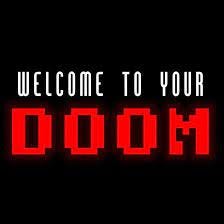Case Study: Park Doom Loop
Nobody buys a property thinking it will be a turd.
Yet, despite a lot of hard work, due diligence and wasted money, you can still find yourself in the middle of a ‘value-add’ doom spiral.
Case Study
We had a park in a healthy southern market within a large and growing MSA (above 750K population). Median incomes and housing prices were above average and all other demographic stats were solid.
Plus, the basis (sub $15K / lot) was great. Man, those were the days!
Plus city services, rolled curbs, below market occupancy (70%) and low lot rents vs. the competition. It seemed like an obvious green light park for a turnaround.
At least on paper.
However:
The actual property location wasn’t great (commercial location / zoning)
The park was oddly difficult to find from the highway
The tenant base was a bit… rough
And there were more park owned homes than we would have expected for a strong market
But we chalked it up to poor management and the out of state investors that we assumed had gotten over their heads.
Surely our superior real estate skills + team would ensure a successful turnaround.
Well, surprise, surprise we couldn’t fix the park’s location.
It didn’t help that prospective tenants couldn’t find the damn thing.
We added signage, we texted google map directions. We created flyers with simple map drawings. We did everything short of buying neon signs and spotlights to light up the sky.
Yet, unbelievably the manager would still get calls from prospects that were lost.
Even worse. Those that found the park, hated the location.
That meant the prospects that were willing to overlook the location were a bit desperate and were mostly god awful tenants.
Desperate tenants translates to poor collections, high turnover and increased repair costs when they inevitably trash the home during the eviction process.
The lot rent model is unreal and renting new homes isn’t too bad either, but mobile home parks don’t work so well when you have to pay $5,000 to repair a 1985 single wide every six months just to collect a few $400 lot rent payments.
Pretty sure that math wasn’t sustainable.
Of course, going in we knew the park had some hair and that we’d need to pony up capital to improve the park and get occupancy higher.
But with turnarounds you plan on each incremental capital improvement dollar translating to additional recurring revenue (gradually increasing occupancy).
But this park was the proverbial leaky bucket.
We would spend gobs of capital to infill, fix up homes, etc. to increase occupancy, only to see more vacancy next month offset our hard work.
We quickly blew through our capital budget but were still far behind our revenue goals.
Shoestring Budget
You can’t run out of capital during the turnaround of a rough park. Once cash reserves are low, you’re already dead.
You start making certain items ‘next months’ problem as the work piles up. You bandaid home repairs, you cancel the new road project, you hire subpar managers and vendors (cheap) because the property can’t support great ones. You start making a bunch of sub-optimal decisions that just delay the inevitable.
Eventually, it becomes difficult to justify rent bumps (even though that’s what you need to improve cash flow) and even the good, long-term tenants start leaving.
This is the doom spiral.
Solution: We Quit
We easily could have gone into denial and watched the slow burn from there. But it seemed clear we weren’t going to fix the park without a radically different approach and a lot more capital. And we weren’t willing to bet a lot more money on our ability to pull that off.
Plus we had other park turnarounds going at the same time that were much easier (and far more profitable) to compare this park too, otherwise we might have stubbornly kept going out of pure ignorance.
The park needed to clean house with the current tenant base and essentially start from square one with a lot more capital. That didn’t sound fun, nor was it going to work with our lender.
Thankfully, a couple of reasonable rent bumps made in the first two years (and our low, off market purchase price) were enough to still earn a solid return on the sale.
However, the outcome was a FAR cry from our initial underwriting. This park should have been a home run, but it was more of a seeing eye single.
But, that’s the nice thing about parks, even the bad ones tend have decent outcomes.
Thankfully, a lot of lessons were learned on this park. That experience helped us avoid a ton of problem parks and still informs the investments we make today.
Happy Trails,
MHP WEEKLY





